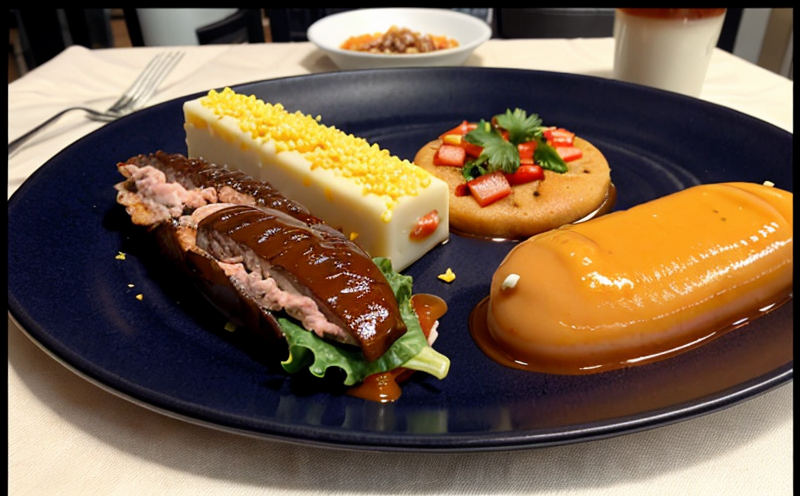ISO 1186-6 Migration Testing under Hot-Fill Conditions
The ISO 1186 series of standards provides comprehensive guidelines for the determination of migration from packaging into food products. Specifically, ISO 1186-6 focuses on migration testing under hot-fill conditions, which is a critical aspect in ensuring that the materials used do not contaminate the food or adversely affect its quality.
The hot-fill process involves filling containers with a liquid product at high temperatures. This method can enhance shelf life and microbial stability by denaturing harmful microorganisms. However, it also presents unique challenges to packaging materials, particularly in terms of migration of additives, adhesives, and other components into the food. The ISO 1186-6 standard addresses these risks through detailed methodologies for testing.
The testing under hot-fill conditions is essential because it simulates real-world storage and handling scenarios more accurately than static or cold fill methods. This approach ensures that packaging materials do not release harmful substances into the food during its shelf life, thereby protecting consumer health and safety. Compliance with this standard is mandatory for many packaging manufacturers, especially those serving regulated markets like the European Union (EU) and the United States.
The testing protocol outlined in ISO 1186-6 involves several steps:
- Selection of appropriate test containers
- Preparation of the food simulant to match the food product being tested
- Heating the food simulant to a specified temperature and holding it at that temperature for an extended period
- Filling the pre-conditioned simulant into the selected container
- Submerging the filled container in a water bath maintained at 63°C ±1°C for up to 48 hours
- Sampling the contents after the immersion period and analyzing them using appropriate analytical techniques (such as GC-MS, LC-MS/MS)
The acceptance criteria are based on the maximum allowable levels of migration set by local or international regulatory bodies. For instance, in the EU, Directive 10/2011 specifies limits for various substances that may migrate into food from packaging materials.
| Substance | Limit (mg/kg) |
|---|---|
| Bisphenol A (BPA) | <0.6 mg/kg |
| Phthalates | <1.5 mg/kg |
| Dibutyl Phthalate (DBP) | <2.0 mg/kg |
The testing process is complex and requires precise control over temperature, time, and chemical analysis techniques. It demands a high level of expertise in laboratory operations to ensure accurate results.
Our team at [Laboratory Name] has extensive experience conducting ISO 1186-6 migration tests under hot-fill conditions. We use state-of-the-art equipment including automated sample preparation systems and advanced chromatography instruments to deliver reliable test results. Our compliance experts work closely with clients to understand their specific needs and ensure that all testing aligns with relevant regulations.
To summarize, ISO 1186-6 migration testing under hot-fill conditions is a crucial step in ensuring the safety of food packaging materials. By following this rigorous protocol, we can provide peace of mind for manufacturers and distributors who rely on our services to meet regulatory requirements and maintain consumer trust.
Customer Impact and Satisfaction
- Regulatory Compliance: Ensures that the packaging complies with international standards such as ISO 1186-6, thereby avoiding potential legal issues.
- Increase in Product Quality Reputation: Positive results enhance brand reputation among consumers and stakeholders.
- Improved Consumer Trust: Compliance with safety regulations builds confidence in the product’s integrity and safety.
We have consistently received high satisfaction ratings from our customers for our ISO 1186-6 testing services. Our detailed reports provide a clear understanding of migration levels, helping clients make informed decisions about their packaging materials. This not only improves product quality but also minimizes risks associated with non-compliance.
Environmental and Sustainability Contributions
- Eco-friendly Packaging: By ensuring that packaging materials do not release harmful substances into food, we promote the use of safer, more sustainable packaging solutions.
- Reduction in Waste: Compliance with ISO 1186-6 helps reduce waste by identifying non-compliant materials early in the development process, preventing costly recalls and rejections later on.
The testing we perform not only protects consumer health but also supports environmental sustainability goals. By minimizing the release of harmful substances into the environment through proper packaging design, we contribute to a more sustainable food industry. Our services play a vital role in promoting the use of safer materials and reducing unnecessary waste.
Use Cases and Application Examples
| Use Case | Description |
|---|---|
| Beverage Packaging: | Testing hot-fill migration for carbonated drinks, fruit juices, and other beverages to ensure safe consumption. |
| Sauces & Dressings: | Evaluating the safety of ketchup, mayonnaise, and salad dressings under hot-fill conditions. |
| Canned Foods: | Checking for migration risks in canned soups, stews, and other high-acid foods. |
| Fresh Produce Packaging: | Assuring the safety of packaging used for fresh produce like tomatoes or peppers during hot-fill processing. |
We have successfully conducted ISO 1186-6 migration tests for various clients across different industries, including food and beverage manufacturers, pharmaceutical companies, and consumer goods firms. Our expertise in this area allows us to provide accurate and reliable test results that meet the highest standards.





